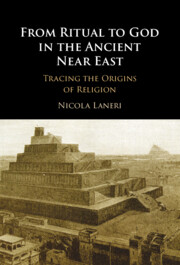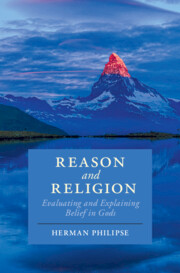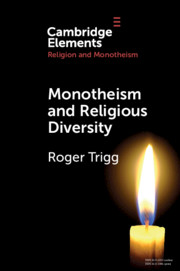Refine search
Actions for selected content:
17 results
The Lararium of Severus Alexander (HA 29.2; 31.4–5): Rereading a Popular Fable of Syncretistic Christ Devotion
-
- Journal:
- Harvard Theological Review / Volume 118 / Issue 2 / April 2025
- Published online by Cambridge University Press:
- 30 July 2025, pp. 285-313
- Print publication:
- April 2025
-
- Article
- Export citation
Chapter 2 - Heroic Deification in Ancient Greek Religion
-
- Book:
- Deification in Classical Greek Philosophy and the Bible
- Published online:
- 10 July 2024
- Print publication:
- 27 June 2024, pp 47-98
-
- Chapter
- Export citation

From Ritual to God in the Ancient Near East
- Tracing the Origins of Religion
-
- Published online:
- 03 May 2024
- Print publication:
- 09 May 2024
5 - Philosophy and the Pluralistic Hypothesis
-
- Book:
- Exploring Religious Pluralism
- Published online:
- 14 March 2024
- Print publication:
- 21 March 2024, pp 64-86
-
- Chapter
- Export citation
Chapter 9 - Pantheus, a ‘Total’ God in the Greek and Roman World
-
-
- Book:
- The Names of the Gods in Ancient Mediterranean Religions
- Published online:
- 23 February 2024
- Print publication:
- 07 March 2024, pp 173-188
-
- Chapter
- Export citation
2 - Ancient Paganism and the Biblical God
-
- Book:
- Learning from Other Religions
- Published online:
- 30 October 2023
- Print publication:
- 16 November 2023, pp 30-77
-
- Chapter
- Export citation
Atheistic modal realism
-
- Journal:
- Religious Studies / Volume 59 / Issue 4 / December 2023
- Published online by Cambridge University Press:
- 24 October 2022, pp. 700-713
- Print publication:
- December 2023
-
- Article
- Export citation
The old gods as a live possibility: on the rational feasibility of non-doxastic paganism
-
- Journal:
- Religious Studies / Volume 59 / Issue 4 / December 2023
- Published online by Cambridge University Press:
- 07 September 2022, pp. 651-664
- Print publication:
- December 2023
-
- Article
-
- You have access
- Open access
- HTML
- Export citation

Reason and Religion
- Evaluating and Explaining Belief in Gods
-
- Published online:
- 21 April 2022
- Print publication:
- 28 April 2022
10 - Religious Pluralism in the Roman Empire
- from Part III - Ethnicity and Identity in the Roman Empire
-
-
- Book:
- Rome: An Empire of Many Nations
- Published online:
- 14 April 2022
- Print publication:
- 21 April 2022, pp 169-185
-
- Chapter
-
- You have access
- Open access
- HTML
- Export citation
10 - Religious Pluralism in the Roman Empire
- from Part III - Ethnicity and Identity in the Roman Empire
-
-
- Book:
- Rome: An Empire of Many Nations
- Published online:
- 04 August 2021
- Print publication:
- 23 September 2021, pp 169-185
-
- Chapter
- Export citation
4 - Containing Violence and Two Entirely Different Kinds of Religion
-
- Book:
- Monotheism, Intolerance, and the Path to Pluralistic Politics
- Published online:
- 04 June 2021
- Print publication:
- 17 June 2021, pp 107-132
-
- Chapter
- Export citation

Monotheism and Religious Diversity
-
- Published online:
- 07 August 2020
- Print publication:
- 03 September 2020
-
- Element
- Export citation
Chapter 3 - Balbus the Stoic and Cotta the Skeptic
-
- Book:
- Cicero on the Philosophy of Religion
- Published online:
- 27 September 2019
- Print publication:
- 17 October 2019, pp 111-181
-
- Chapter
- Export citation
Written and oral aspects of an early Wahhābī epistle
-
- Journal:
- Bulletin of the School of Oriental and African Studies / Volume 78 / Issue 1 / February 2015
- Published online by Cambridge University Press:
- 17 March 2015, pp. 161-178
- Print publication:
- February 2015
-
- Article
- Export citation
17a - The world-view
- from 17 - Late polytheism
-
-
- Book:
- The Cambridge Ancient History
- Published online:
- 28 March 2008
- Print publication:
- 08 September 2005, pp 521-537
-
- Chapter
- Export citation
14 - THE RELIGION OF ACHAEMENIAN IRAN
-
-
- Book:
- The Cambridge History of Iran
- Published online:
- 28 March 2008
- Print publication:
- 06 June 1985, pp 664-697
-
- Chapter
- Export citation
